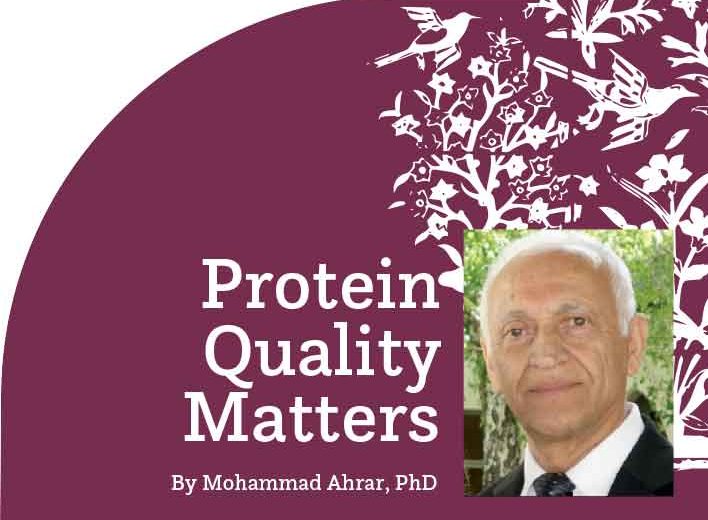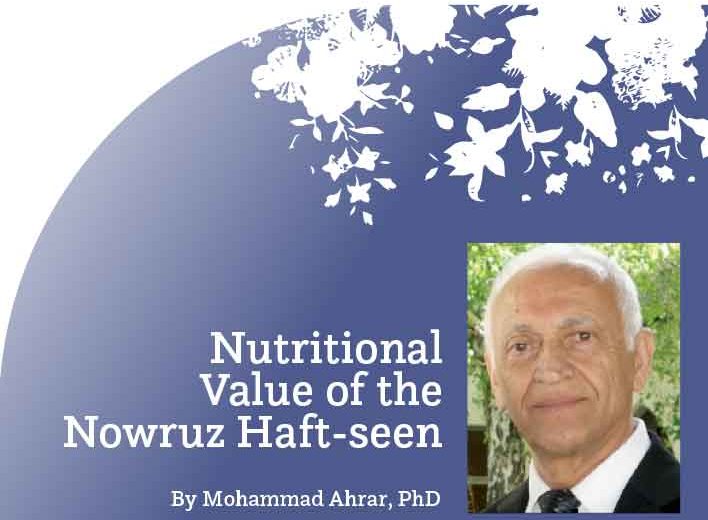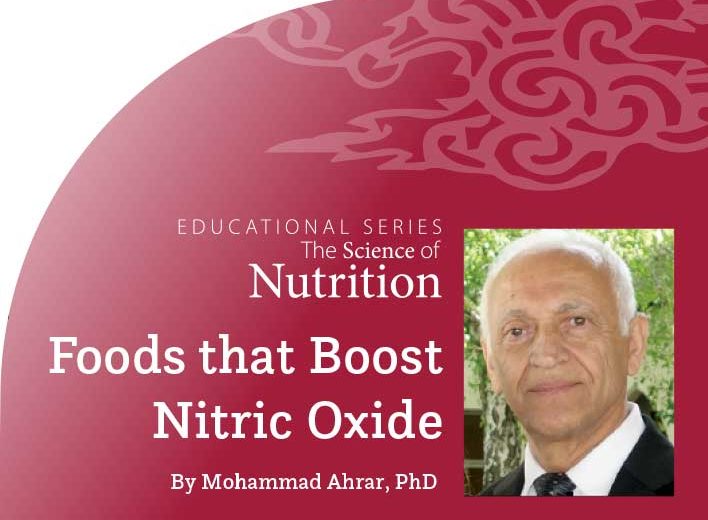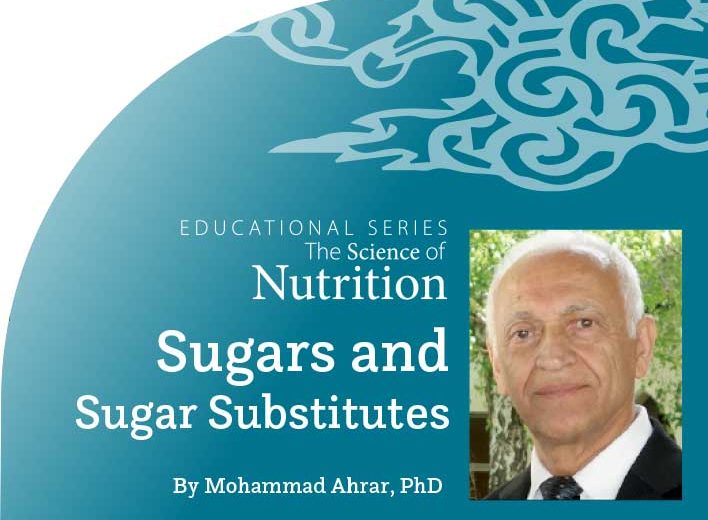Educational Series
The Science Nutrition
Nutritional Value of the Nowruz Haft-seen
By Mohammad Ahrar, PhD
Introduction
One of the most important Nowruz traditions is setting a haft-seen table (sofreh), full of natural edible elements. All items start with an S, including Seeb or Sib (apple), Seer (garlic), Serkeh (vinegar), Samanu (sprouted wheat paste), Senjed (dried oleaster fruit), Sumac (dried berry), and Sabzeh (green sprouts). The haft-seen table is also decorated with other symbolic items that do not start with S, but are decorative elements which make the sofreh colorful and attractive. Although each item symbolizes a concept in Persian culture, some items on the haft-seen table have inherently great nutritional value. In this article, we will briefly review the nutritional value of the Nowruz haft-seen.

1- Seeb (Apple)
This common fruit is rich in vitamins, minerals, fiber, and antioxidants, all of which provide good health benefits. An average-size apple provides 9–11% of a person’s daily requirement of vitamin C, which can boost the immune system and help defend the body from infections and diseases. Vitamin C is also a potent antioxidant. (More information about Vitamin C is discussed in Peyk #173.) Besides Vitamin C, apples also contain other types of antioxidants, which help neutralize free radicals that are produced in body cells. When free radicals are accumulated in the body, they can damage the cells and cause a range of conditions, including cancer and diabetes. (More information about antioxidants can be found in Peyk #184.)
Apples contain most essential minerals in considerable amounts, including potassium, which helps relax blood vessels, reducing the risk of high blood pressure and cardiovascular complications. A large whole apple provides about 4 grams of fiber, which is about 10-20% of an average adult’s daily requirement. People who consume fruits high in fiber appear to have a lower risk of cardiovascular disease and stroke, and fiber may also help reduce the risk of colon cancer. Additionally, consuming apples daily may help lower the risk of lung cancer, breast cancer, and colorectal cancer among other types of cancer.
2- Seer (Garlic)
Garlic, a tuber closely related to onions, shallots, and leeks, is known to boost the function of the immune system. Like apples, garlic contains antioxidants that may support the body’s protective mechanisms against oxidative damage from free radicals.
One clove (about 3 grams) of raw garlic provides 1.2 milligrams of Vitamin B6, and a substantial amount of other B vitamins, as well as Vitamin C and Vitamin K. Garlic also provides necessary minerals for the body, including zinc, iron, potassium, and magnesium. It is also an excellent source of calcium, manganese, phosphorus, copper, and selenium.
Most of the health benefits of garlic are due to the presence of sulfur compounds that exert potent biological effects in the body cells. At high doses, the sulfur compounds in garlic have been shown to protect against organ damage from heavy metal toxicity. The phosphorus content in garlic plays a major role in energy production in the cells.
As garlic and many other underground bulbs and tubers concentrate nutrients, they may also concentrate toxins and pesticides. For this reason, organic onions, beets, turnips, potatoes, and similar food products may be preferable.
3- Serkeh (Vinegar)
The word vinegar derives from the French “vin aigre,” or sour wine. It is a mixture of acetic acid and water, produced as a result of fermentation of sugars in aerobic conditions. The use of vinegar has been traced back to 5000 B.C.E. in Babylon as a medicine, a preservative, and a drink to boost strength and promote wellness. Apple cider vinegar is suspected to be useful in addressing acid reflux and heartburn, due to the fact that acetic acid is a weak acid which can buffer the strong acids such as hydrochloric acid in the stomach.
But be warned: regular consumption of vinegar can cause tooth erosion or decrease potassium in blood to hazardous levels. Vinegar may also interact with medication taken by diabetic people; so, please, tell your doctor if you are regularly taking vinegar.
4- Samanu (Sprouted Wheat Paste)
Samanu is made of sprouted wheat; wheat grain is usually soaked for 6 to 7 days, then blended with water. The mixture is then heated over medium temperature and constantly stirred for hours until the water is evaporated, turning the mixture into a puree. Samanu is surprisingly sweet, which occurs when the starch in wheat (which is a complex carbohydrate) is broken down by enzymes into a simple sugar. Samanu contains protein, is rich in vitamin B6, and is also a good source of iron, phosphorus, zinc, selenium, magnesium, copper, and potassium.
5- Senjed (Dried Oleaster Fruit)
Senjed, the small dried fruit of the oleaster plant (also known as the lotus tree fruit, silverberry, Russian wild olive, or the Persian olive), is a noble item on the haft-seen table. It is a traditional medicine, used since ancient times in Iran, to treat various diseases such as urinary diseases, diarrhea, nausea, vomiting, gastric disorders, jaundice, asthma, and fever. In some parts of Iran, the dried powder of the fruit is mixed with milk and used to alleviate rheumatoid arthritis and joint pain. As with any other food or substance ingested for medicinal purposes, please check with your doctor before taking in medicinal doses.
6- Sumac (Dried Berry)
The sumac plant, which belongs to the same family as cashews, produces a deep purplish-red color berry which is dried and ground into a coarse powder. A popular ingredient added to some Iranian foods to enhance flavor and taste, sumac is also used therapeutically in the Mediterranean and Middle East in herbal medicine practices.
Sumac contains trace amounts of several essential nutrients, including Vitamins C, B1, B2, and B6, plus carbs, fat, and some protein. The majority of the fat in sumac consist of essential fatty acids, namely oleic acid and linoleic acid, which are associated with heart health and healthy skin. However, the most important nutritional value of sumac is the potent antioxidants it contains, including tannins, anthocyanins, and flavonoids.
7- Sabzeh (Green Sprouts)
The most common sabzeh on the haft-seen table are wheat, lentil, and mung bean sprouts. Wheat sprouts contain plenty of fiber, vitamins, minerals, proteins, essential amino acids, and other nutrients. One hundred grams of sprouted wheat contain about twenty percent of the daily requirement of most of the B vitamins, including B6, thiamin, riboflavin, pantothenic acid, and niacin.
The grown, grassy, or leafy parts of the sprouts may not be tasty but are quite nutritious; very young grown sprouts–about 5 to 6 centimeters tall–are commonly juiced or consumed as a health food supplement.
As you can see, the haft-seen table is a healthy table. While not every component may be right for your particular body or taste, the foods shared on the haft-seen table at Nowruz represent the abundant nutrition of Spring.
Have a Happy Nowruz and a very healthy haft-seen.


















